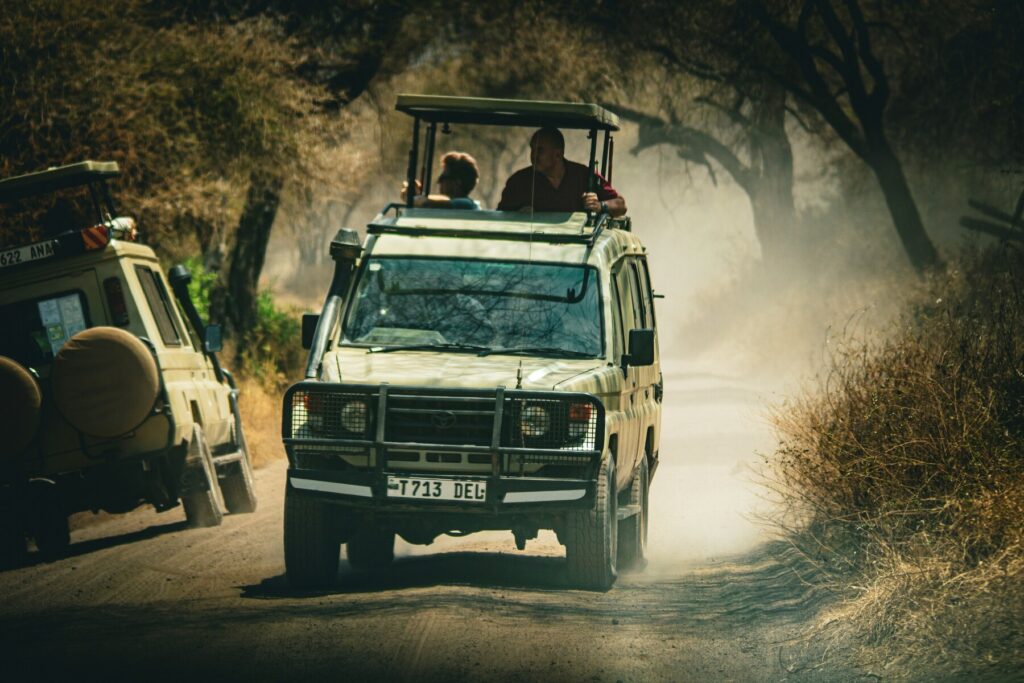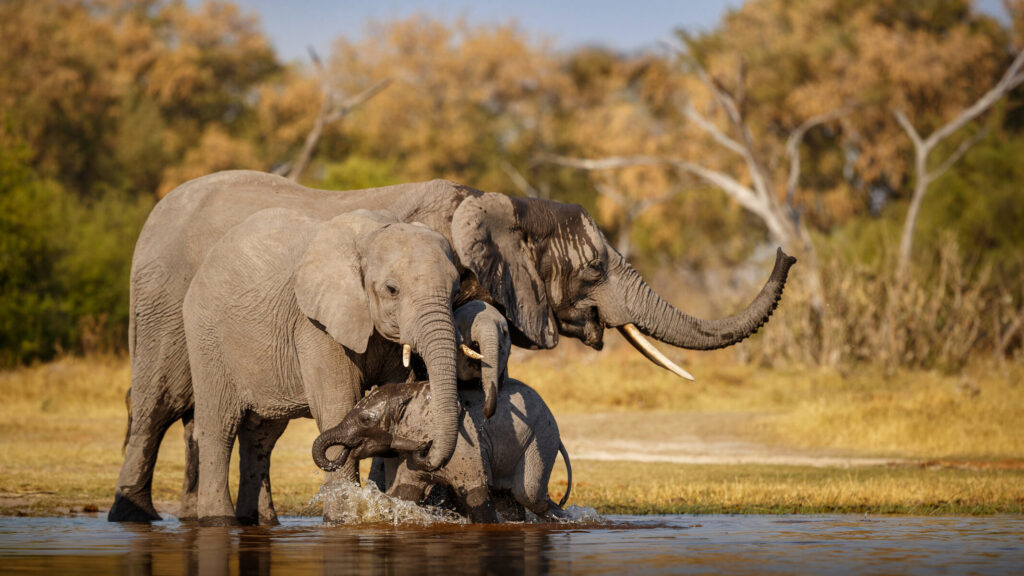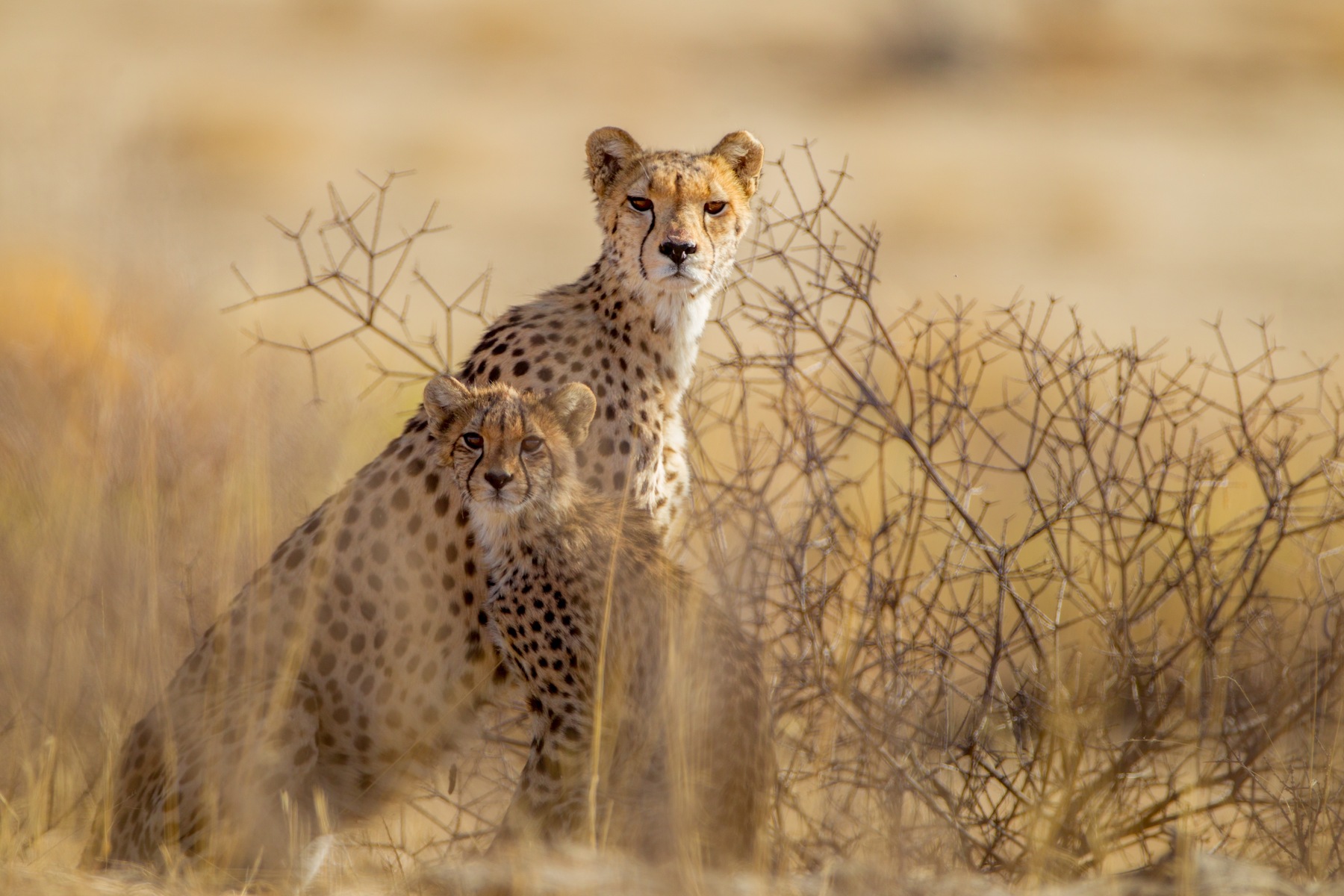Big Game Portraits: Kalahari Wildlife Photography
The Kalahari Desert is home to some of Africa’s most iconic big game: lions, leopards, elephants, and cheetahs. Their size, strength, and behaviour make creating big game portraits both thrilling and challenging. Unlike plains game, these animals can be unpredictable, territorial, and sometimes dangerous, requiring skill, patience, and respect.
Gear and Safety for Big Game
Photographing large predators or megafauna demands sturdy, reliable equipment. Telephoto lenses (200–600mm) allow close framing without intrusion. Fast burst modes and continuous autofocus are essential to capture sudden movements during hunts or interactions. Shooting from vehicles provides safety while enabling proximity. Always maintain safe distances: elephants or lions may charge unexpectedly. Sandbags or beanbags stabilize shots on soft dunes, and dust-sealed cameras protect against the Kalahari’s fine sand. Extra batteries and memory cards are vital due to the remote environment.

Understanding Big Game Behaviour
Big game in the Kalahari moves differently from plains animals. Lions often rest under camelthorn trees, becoming active near dawn or dusk. Cheetahs use elevated dunes to scan for prey, while leopards remain elusive, blending with sparse trees. Elephants may travel in large herds, with adults protecting calves aggressively. Understanding these patterns allows photographers to anticipate action and frame compelling shots.
Using the Kalahari Environment
Red dunes, salt pans, and dry riverbeds create dramatic backdrops. Early morning and late afternoon light reveal textures in fur, horns, and tusks. Heat haze and mirages can enhance composition when used creatively. Dust kicked up by running herds adds dynamic motion. Unlike dense savannahs, open terrain forces photographers to consider concealment and timing carefully to capture behaviour naturally.

Capturing Dramatic Interactions
Moments like lions hunting, elephants dust-bathing, or cheetahs sprinting across pans provide dynamic photo opportunities. Low-angle shots convey size and power, while elevated views capture herd dynamics. Vehicles or hides act as discreet blinds, allowing close observation without disturbing or provoking animals. Quick reflexes are essential to seize fleeting interactions.
Final Thoughts
Big game portraits in the Kalahari combines technical skill, deep understanding of behaviour, and careful safety considerations. Its vast, harsh landscapes, dramatic light, and formidable wildlife create unparalleled opportunities for striking, memorable portraits.

